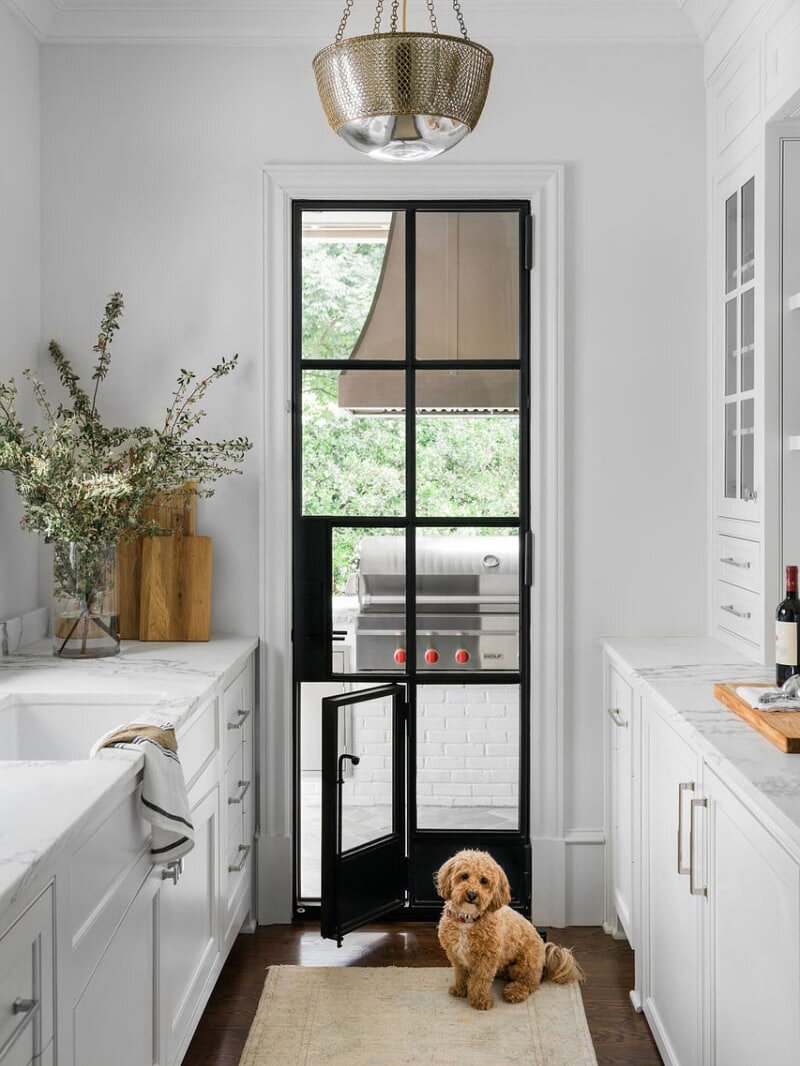When I was buying my first home, my mom nudged me to put in a significantly lower bid on a townhome I really wanted.
“Do that, and you’ll lose out on this home,” rebuffed my tenacious real estate agent, who was intimately familiar with the comparable properties in my neighborhood. Mom, as it turned out, didn’t know best in this instance. But my real estate agent did, and my offer was accepted.
Great real estate agents are like the captains of your home-buying team. If I had lowballed the offer, I would have probably lost the house — and done so in an attempt to save about $10 to $20 a month over the life of a 30-year loan.
At Apartment Therapy, we interview a lot of real estate agents on topics that range from TV placement to tips for first-time buyers. Here’s some of the best advice they’ve shared with us over the years.
On Home Finance and Budgeting
1. Your home loan could fall through if you open additional credit accounts while you’re pre-approved for a mortgage. So, hold off on opening that store credit card at the home improvement big box until after you’ve closed on your home loan.
2. Also, don’t change jobs while in the mortgage process. It could hurt your chances of securing a loan.
3. If you’re buying your first home, you probably don’t have the budget for your dream home, but you can make it yours along the way and build equity in the process.
4. A good real estate agent will not just care about how much you’re pre-approved for, but also how much you’re comfortable paying every month once you factor in things like maintenance and potential HOA assessments.
5. Bidding wars are prevalent. But to prevent heartbreak in the homebuying process, look at homes that are on the lower end of your budget so you have some wiggle room to make counter offers.
6. Zestimates have a margin of error. Your real estate agent should know the nuances of a neighborhood and be well-versed in looking at comps, or comparable homes in the area, to determine whether a home is priced correctly.
7. If you don’t have great credit, work with a mortgage broker who might be able to find some alternatives to the conventional loans offered by banks.
8. You’ll hear a lot of chatter about interest rates and inventory. But the best time to buy a home, really, is when you can afford to do so.
On First-Time Buying
9. Refrain from making much commentary about a home while you’re touring it because homeowners could be eavesdropping via smart home technology or nanny cams.
10. Talk to neighbors before buying.
11. If a home meets 85 percent of the requirements you’re looking for, make an offer.
12. Keep a poker face when you’re touring homes. If you seem too enthusiastic, you lose some of your negotiating power.
13. Don’t skip a home inspection, and ask for seller concessions to help compensate for imperfections.
14. When you’re interviewing real estate agents to hire, you want an agent who doesn’t shy away from hard conversations.
15. Take a look at the home’s floors; they tell you a lot about how well the property has been cared for and its condition.
16. Don’t get too overly attached to a listing, because it can prevent you from making good business decisions.
17. Real estate agents want you to have a pre-qualification letter; it sets you apart from the looky-loos who aren’t serious about home buying.
18. Don’t use the bathroom at open houses.
19. An escalation clause can help you win in a bidding war without going over your budget.
20. Pay attention to the seller’s disclosure. This document spills the tea on past problems, like leaks or pest problems, that buyers should know about.
21. Don’t want photos of your home’s interior floating around online after you’ve moved in? You can ask the listing agent to take them offline.
22. HOAs are notorious for having some ridiculous rules, so make sure to read them before signing on the dotted line. Still, many of those rules can actually help protect your home’s value.
On Design
23. While trendy, barn doors can pose some significant livability challenges: They lack sound reduction, can be hazardous if you have kids and the rustic farmhouse look will clash with modern design elements in your home.
24. Natural lighting is great in a bathroom — you should seek this out. But if there aren’t any windows or a skylight, you could always add some lighting next to the vanity.
25. Floor-to-ceiling windows may be beautiful, but be prepared to pay for expensive, custom-made window coverings and special heat-protecting blinds.
26. Neutrals and calming colors are better in a bedroom than bold, bright colors, but you should really do what you like because the paint color in your bedroom has no sway on a home’s selling price.
27. Updating the hardware in a bathroom can go a long way, and doesn’t require new plumbing.
28. Instead of painting your cabinets (which can be quite time consuming) switch things up with a tiled backsplash, which can often complement older finishes.
29. Color-matching paint can be tough. If you love the shades that are in a home you’re buying, ask the sellers to jot down the paint colors they used. They also may have contractors they’ve hired that are familiar with the property.
On Home Staging
30. Busy backsplashes, dim lighting, and pots and pans hanging from the ceiling above a center island will make your kitchen look and feel smaller.
31. TV placement is based on personal preference, but if you’ve got a clunky old TV, it’s best to take it down before showings.
32. Buyers fancy a finished basement, but wood paneling and carpet in this area can date the subterranean space.
33. Loud paint colors, whether on the walls or cabinets, can deter buyers.
34. During the pandemic, kitchens, closets, and dining rooms started doubling as offices. But repurposed rooms can actually deter buyers, especially if they want to think of their bedroom as a place of relaxation and see an office set up in the closet.
35. Have a musty basement? Try a product called DampRid to help absorb the moisture and eliminate the funky smell.
On Selling
36. Buyers want to smell fresh air when they tour your home; not any artificial scents from candles or air fresheners.
37. Selling a home is an emotional process, but don’t let your love for your home cause you to price it higher than the market dictates.
38. Whether you’ve got broken-down appliances or have noticed water spots indicative of a leak, real estate agents want you to disclose any and all defects to them.
39. If the listing photos show your home staged, make sure that’s the way your home looks during showings.
40. Despite how easy and fun it looks on TV, the fix-and-flip process is much more difficult IRL.
41. The number nine can be your friend. Pricing a home at $499,000, for instance, can feel like a bargain and it will attract buyers who set their upper limit at in the 400s versus the 500s.
42. Certain characteristics can subtract from your home’s value. Some notorious comp killers include having a home that backs up to a landfill or highway.
On Curb Appeal
43. Boxwood shrubs and border hedges are outdated when it comes to curb appeal.
44. Neutral and natural colors are the best colors to paint your house.
45. The formula for great curb appeal includes a good pressure washing on the home’s sidings, plus giving your front door a fresh paint job, putting out a welcome mat and adding some flowers or plants.
46. A storm door makes your home less inviting.
47. Your garage door is a major part of your curb appeal, and buyers notice things like oil stains, shabby doors, and squeaky hinges.
48. Lamp posts are charming — and are once again popular with homeowners.
Learn more at ApartmentTherapy.com
Related Links
If there is a home that you would like more information about, if you are considering selling a property, or if you have questions about the housing market in your neighborhood, please reach out. We’re here to help.












